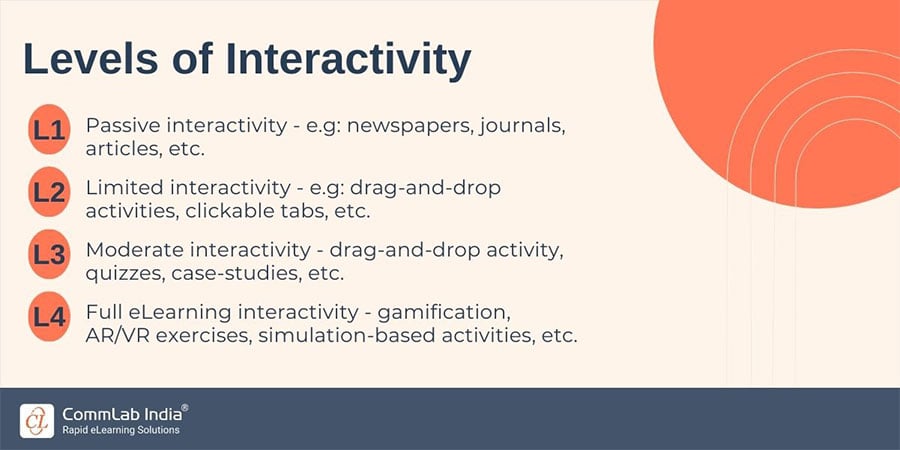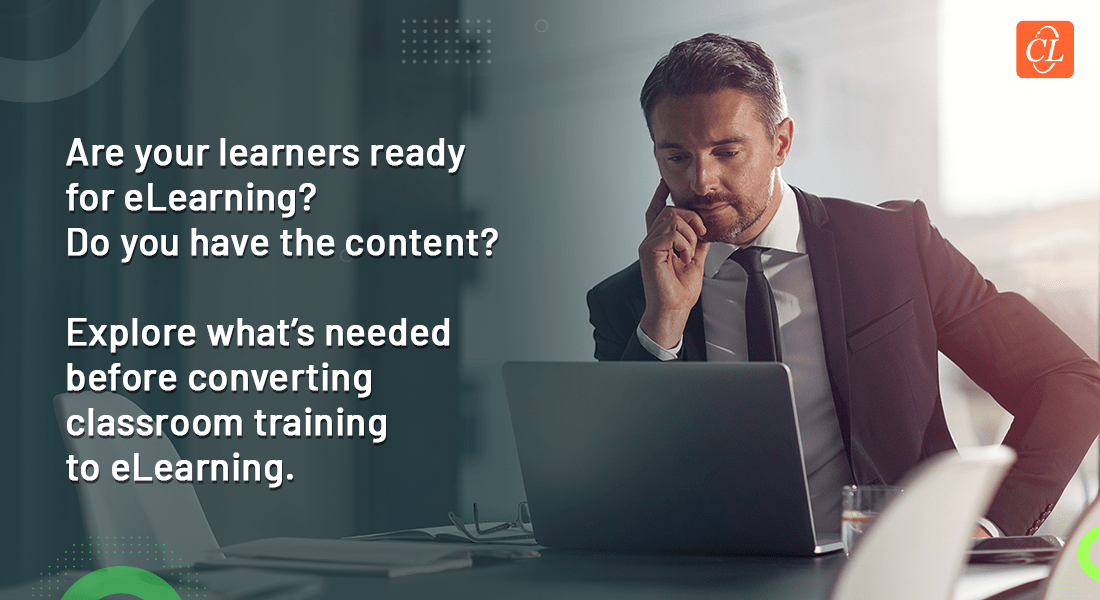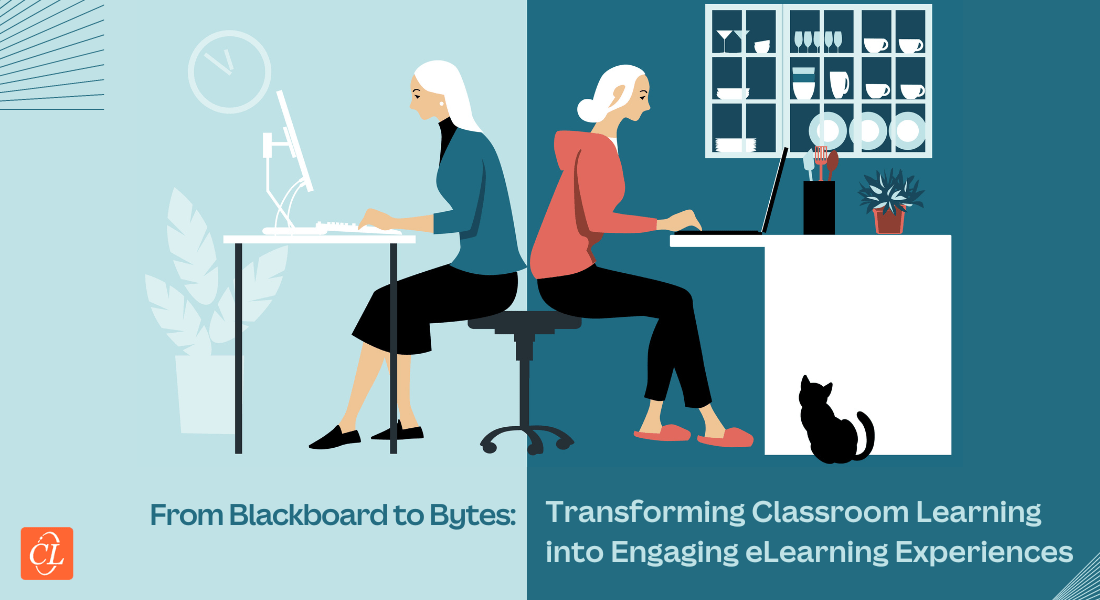10 Step Guide to Convert ILT Courses into Engaging eLearning Modules
Looking to transform your traditional instructor-led training (ILT) courses into eLearning? Remember that it involves building engaging experiences that meet learners' needs and empower them to achieve their goals. Continue reading for the process in detail…

Converting Instructor-Led Training (ILT) courses to eLearning modules is becoming increasingly important as organizations recognize the benefits of digital learning. eLearning offers a flexible, cost-effective, and scalable solution for delivering training to a geographically dispersed workforce. It allows learners to access training materials at their own pace, on their own time, and from anywhere in the world.
In addition, eLearning offers opportunities for interactive and engaging learning experiences, incorporating multimedia elements and simulations that can enhance the learning outcomes. As such, converting ILT to eLearning can help organizations meet the changing needs of the modern workforce, improve training effectiveness, and achieve better learning outcomes.
However, converting Instructor-Led Training (ILT) to eLearning is a complex process that requires careful planning, attention to detail, and the use of appropriate tools and technologies. By following a structured process and taking the time to analyze learners, content, and delivery modes, you can create eLearning experiences that are engaging, effective, and accessible to learners.
How to Ace ILT to eLearning Conversion?
Here are the steps in the process –
- Analyze the Learners
- Study the Learning Environment
- Revisit the Learning Objectives
(continue reading to know more)
In this article, we’ll discuss ten essential steps for the conversion process that can help you create a successful eLearning experience.
10 Essential Steps for the Conversion Process
1. Analyze the Learners

Before you begin designing a course or converting it from one format to another, it is essential to understand your learners’ needs, preferences, and learning styles. You can collect data through surveys, interviews, or analyzing existing course evaluations. This information will help you tailor your course to meet the learners’ needs effectively.
2. Study the Learning Environment
Converting a course to a different format requires considering the learning environment, including the mode of delivery, available technology, and learners’ access to resources. It is essential to consider how the new format will impact the learners’ experience and what adjustments you need to make to create an effective learning environment.
3. Revisit the Learning Objectives
The learning objectives of a course should remain consistent, regardless of the format. Review the learning objectives and determine whether any revisions or additions are necessary to ensure they align with the course content and learners’ needs.
4. Analyze the Content
Review the existing course content and determine what changes are required to convert it to the new format. Ensure that the content is up-to-date and relevant to the learners’ needs.
5. Identify and Fill any Knowledge Gaps
Identify any knowledge gaps that learners may have and devise strategies to address them. Consider offering additional resources, creating new content, or providing support materials to help learners achieve the learning objectives.
→Access Now: Is Your Training Material Ready for eLearning? [Webinar Recording]
6. Devise an Appropriate Instructional Strategy
Design an instructional strategy that aligns with the learning objectives, content, and learners’ needs. Consider using a mix of instructional approaches such as lectures, discussions, case studies, and interactive activities to keep learners engaged.
7. Decide on the Amount of Audio
Decide on the amount of audio that you will include in the course. Audio can enhance the learning experience, but it can also be distracting if overused. Take notes from the learning environment and the learners’ preferences and take a decision accordingly. For instance, if the learners will be accessing the course in a noisy environment, such as a sales floor, audio narration could be distracting and difficult to hear. On the other hand, if learners will be accessing the course in a quiet environment, audio narration could enhance the learning experience by providing a more engaging and immersive experience.
8. Decide on the Level of Interactivity

Determine the level of interactivity you will incorporate into the course. Interactivity can increase learner engagement and retention but can also be distracting if it is overused or not designed well.
Assume that you are converting a compliance training course 22from ILT to eLearning. As part of the conversion process, you need to determine the level of interactivity to incorporate into the course. You could include interactive elements such as quizzes, scenarios, and case studies to increase engagement and retention, but it’s important to strike the right balance. For example, if the course is highly technical and requires learners to focus on complex concepts, too much interactivity could be distracting and counterproductive.
On the other hand, if the course is relatively simple, adding more interactive elements can enhance the learning experience and keep learners engaged. By analyzing the content and designing the course with the right level of interactivity, you can create an effective eLearning experience.
9. Incorporate Formative Assessments
Design formative assessments that align with the learning objectives and provide learners with feedback on their progress. Formative assessments can help learners identify areas where they need improvement and help instructors adjust the course content and instructional strategies to meet learners’ needs.
10. Summarize and Plant the Final Test
Design a summary and final test to assess learners’ understanding of the course content and their achievement of the learning objectives. Ensure that the summary and final test align with the course content and instructional strategies and provide learners with a clear indication of their progress and achievement.
Parting Thoughts
By following these ten essential steps, you can convert a course effectively and create an engaging and effective learning experience for your learners. While these are the steps to successful ILT to eLearning course conversion, it is helpful to know the key considerations to be made for high-impact eLearning. And webinar recording will guide you through them…





